Inventory of Inogashira Waterfowl
Now that I’ve had time to check them against a few lists, I think I can identify the birds I photographed at the park, and one I wasn’t able to catch–or even see very clearly. And this post is by way of the creation of a new category for this blog, “Birdwatching in Japan.” Since I got the 10x zoom digital camera with image stabilization, I am much better equipped than ever before to try to catch the little (and sometimes not-so-little) buggers on film. Way, way back, I used to be a birdwatcher, and mostly complacency and convenience got in the way–but now I’m getting into it again, and hope to construct a special page to catalog the local birds. More on that later.
First, the ducks: Inogashira Park has a pretty attractive variety.
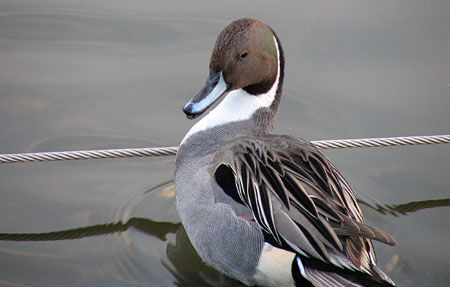
This is a Northern Pintail, a beautiful bird–note the fine striation on the side feathers (in detail below).
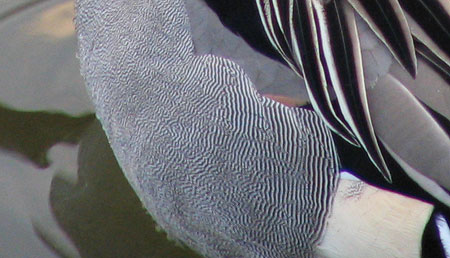
And of course, the reason for its name, clear in this photo:
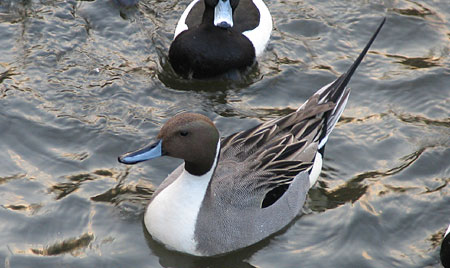
The next bird, and easily the most striking for its contrast, is the Tufted Duck:
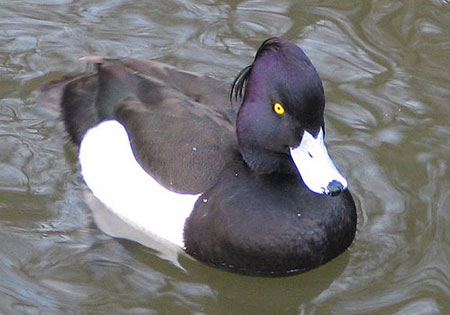
Note the purple sheen to the head feathers, and of course the crest feathers sticking out the back.
The Common Pochard, meanwhile, has a lovely reddish-brown head:
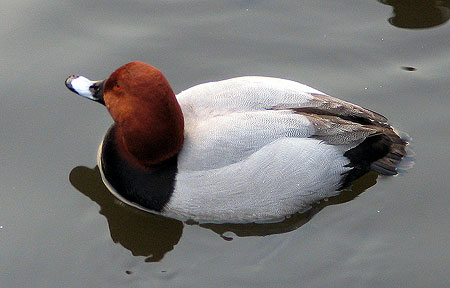
What I thought might have been an immature Pochard turned out to be instead an adult Little Grebe:
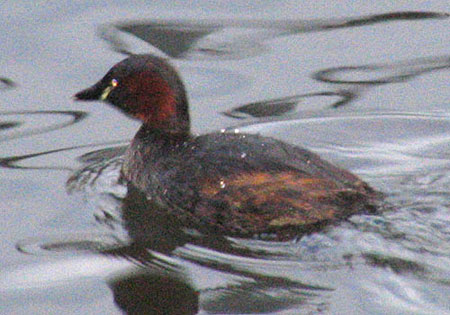
It was hard to get a good shot, however; the little sucker kept going under for a minute at a time and popped back up several meters away each time. If several of these photos appear grainy, it’s due to the low light in the late afternoon in the mostly shaded park.
I didn’t catch much of this duck at first–thought it was a common Mallard, but it turns out to be a Northern Shoveler–you might make out the slightly spoon-shaped beak:
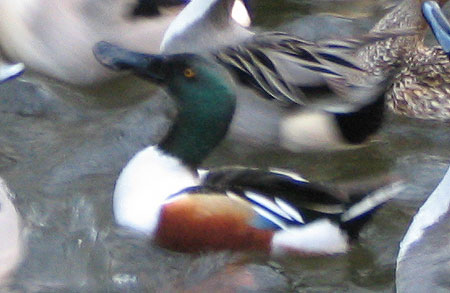
The one we did notice, actually, was hard to identify simply because it seemed to be stuck in “shovel” mode–for as long as we watched the bird (for several minutes), it never stopped doing this. So long, at least, that I was beginning to worry about the poor thing. But it was probably just very hungry…
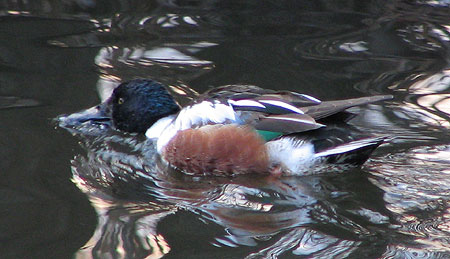
Not that it was the only duck doing something unusual; this duck, hard to identify (likely a female, maybe a Pintail), spent several minutes with her fanny stuck up in the air. She’d probably found some effect in the fountain that allowed her to get food by just waiting for the water to come to her, or something. But it was amusing for everyone watching.
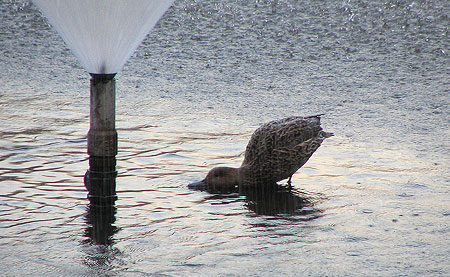
The two non-duck (or -grebe) birds spotted in the park that day (aside from the ubiquitous sparrows and crows) included a Common Kingfisher, notable by the flash of turquoise feathers on its back (almost the only distinct thing I saw when it flashed by).
But the last bird I caught, and perhaps a fairly uncommon one, was the Black-crowned Night Heron, confirmed not just by its markings, but also by the unusual bright white feather coming out the back of its head. Apparently, it is a lot longer usually, meaning this bird might be somewhat short of fully mature:
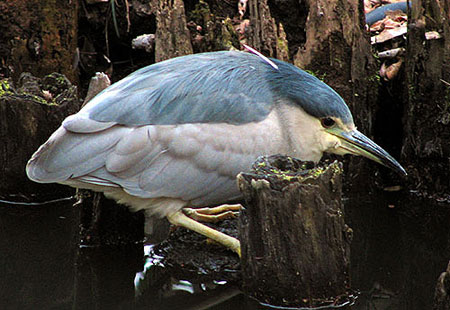
I noticed it only because a couple of other people had–it was standing stock-still and only a few meters away from the walking path. The photo above is adjusted for contrast, but in the dusk shade, the bird was almost hard to spot at first. Maybe it was resting, maybe it was sitting still to catch a fish or something, but it barely moved in the five minutes I watched it.
I’m sure that Inogashira has more birds to offer; I’ll be going back there sometime soon, I imagine.

Thanks for the research on the types. I live next to Ukima Park (on the border of Itabashi and Kita-ku) and we have those exact types of ducks in the lake there as well. I always wondered what type of ducks they were, but I’m just too lazy to do the research. Thanks! (Now when my son learns to speak and asks me about them I can stroke my chin and identify them by name in a sagely manner.)